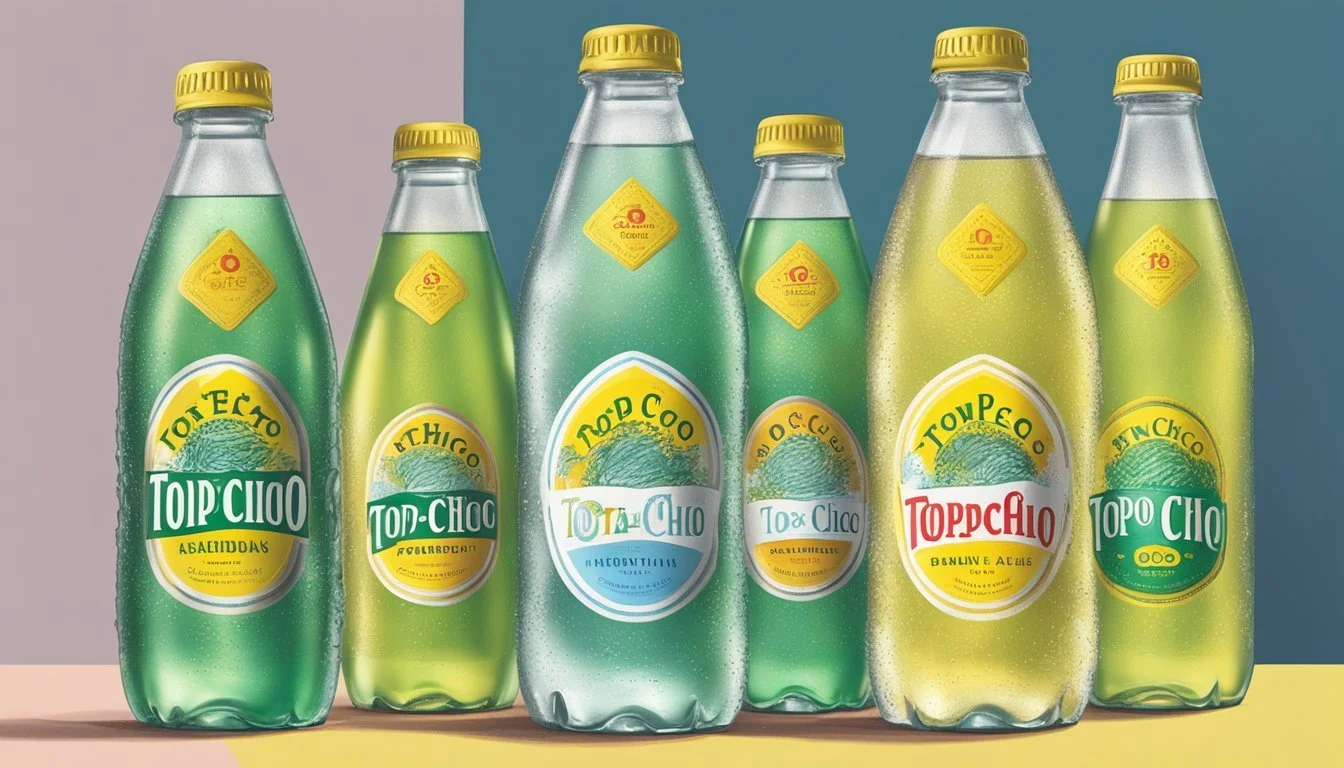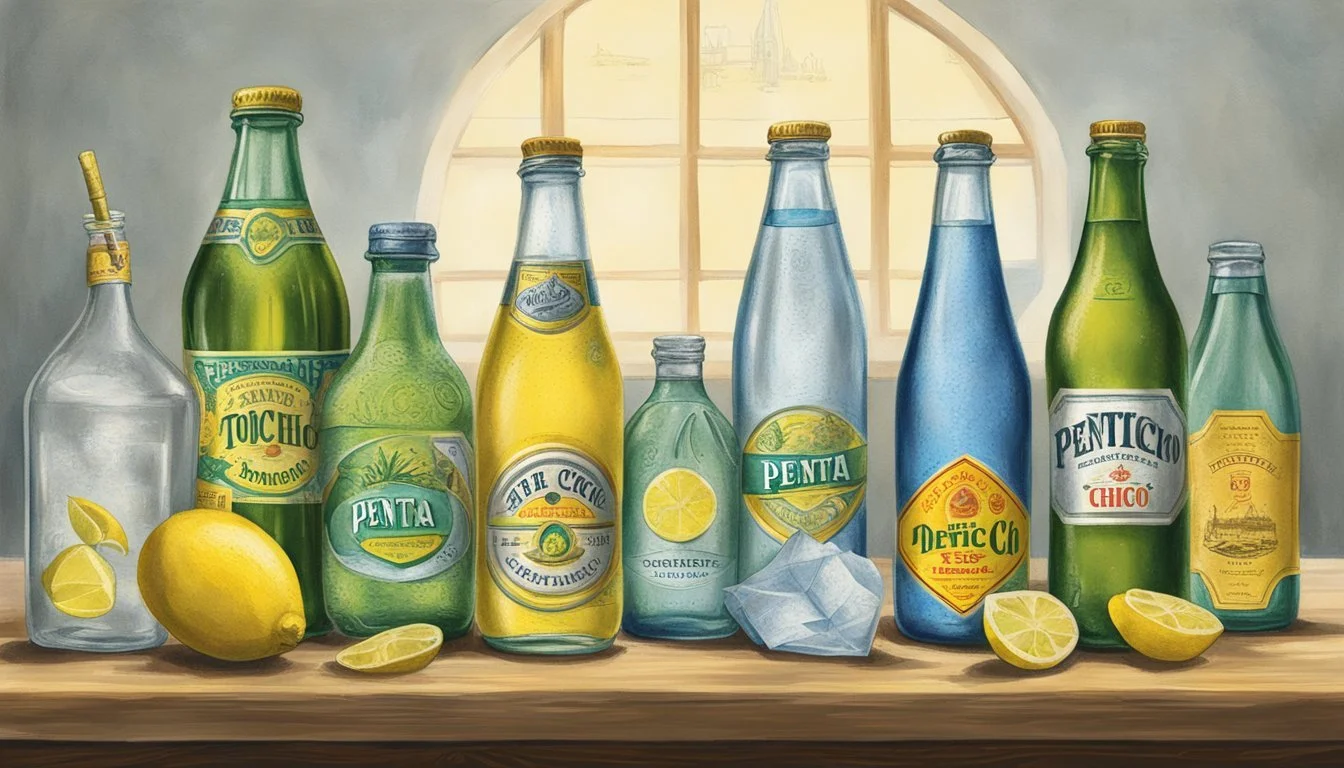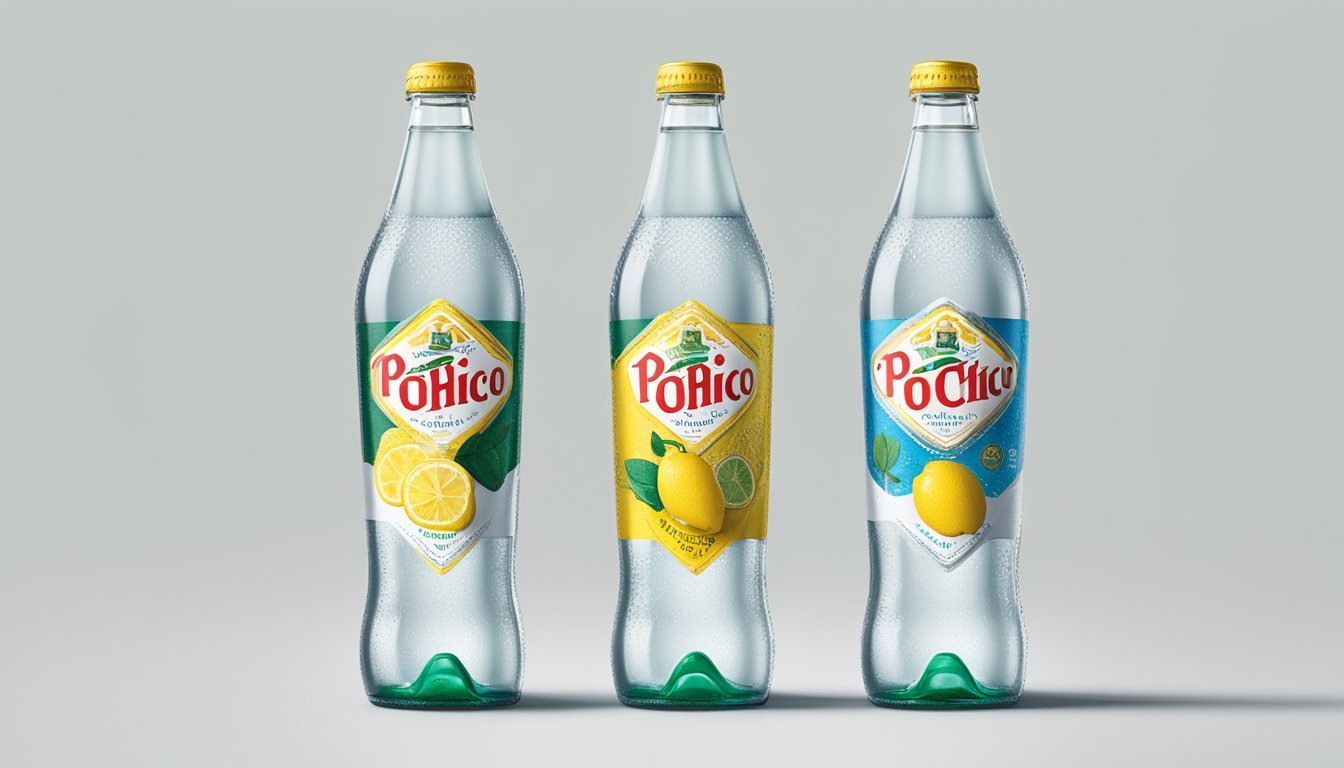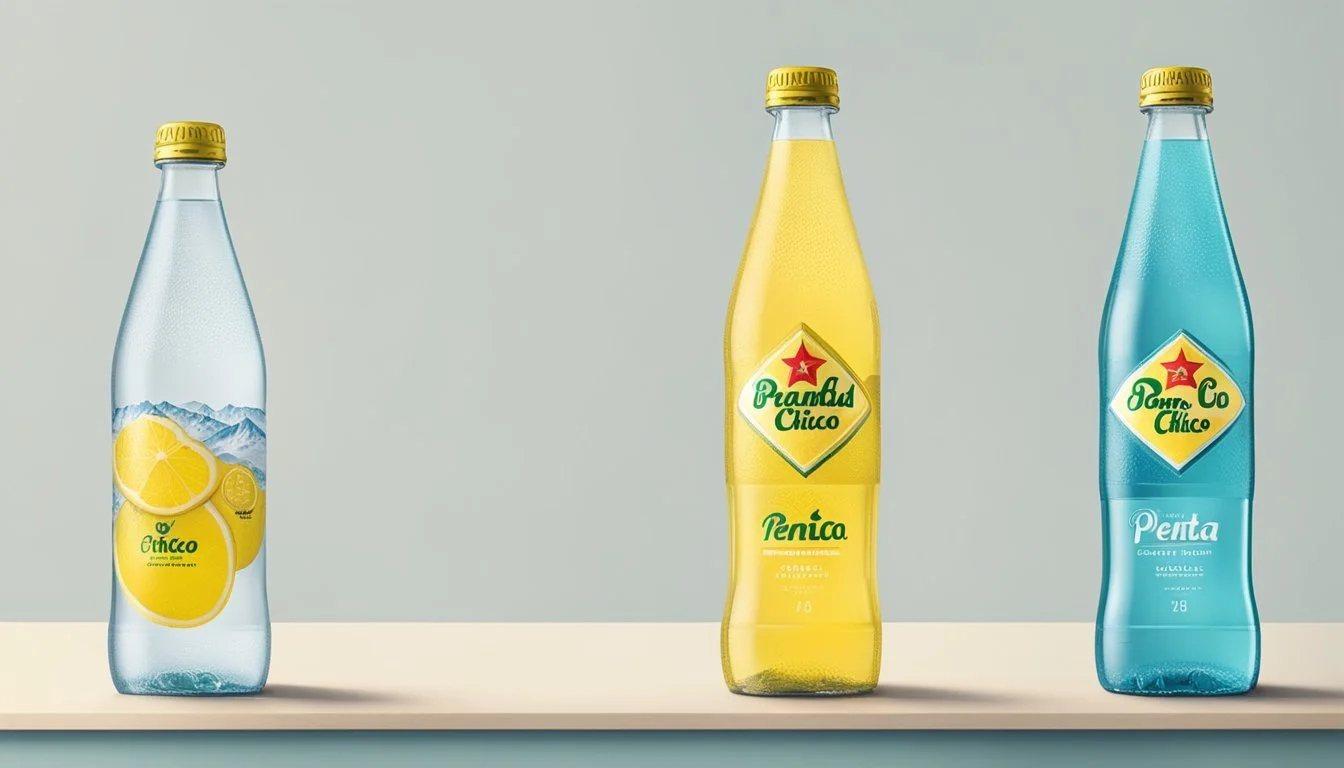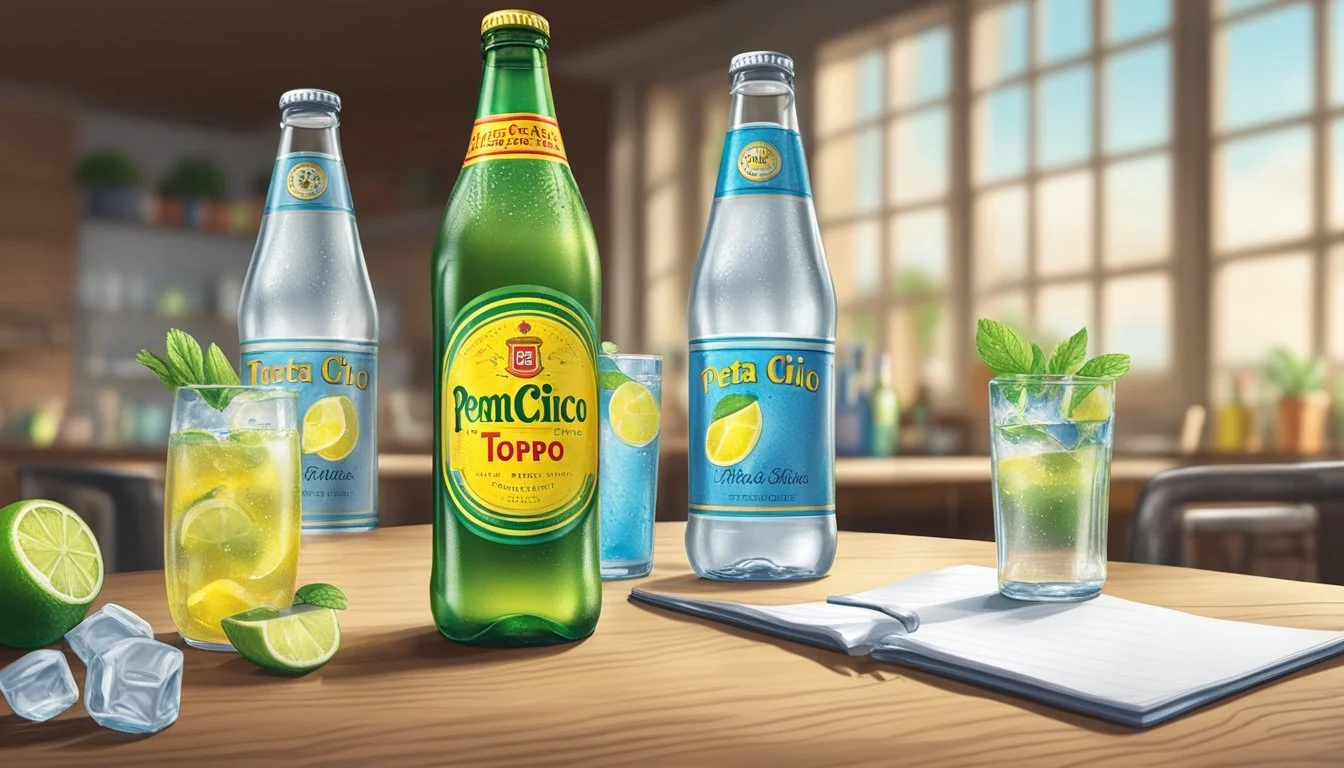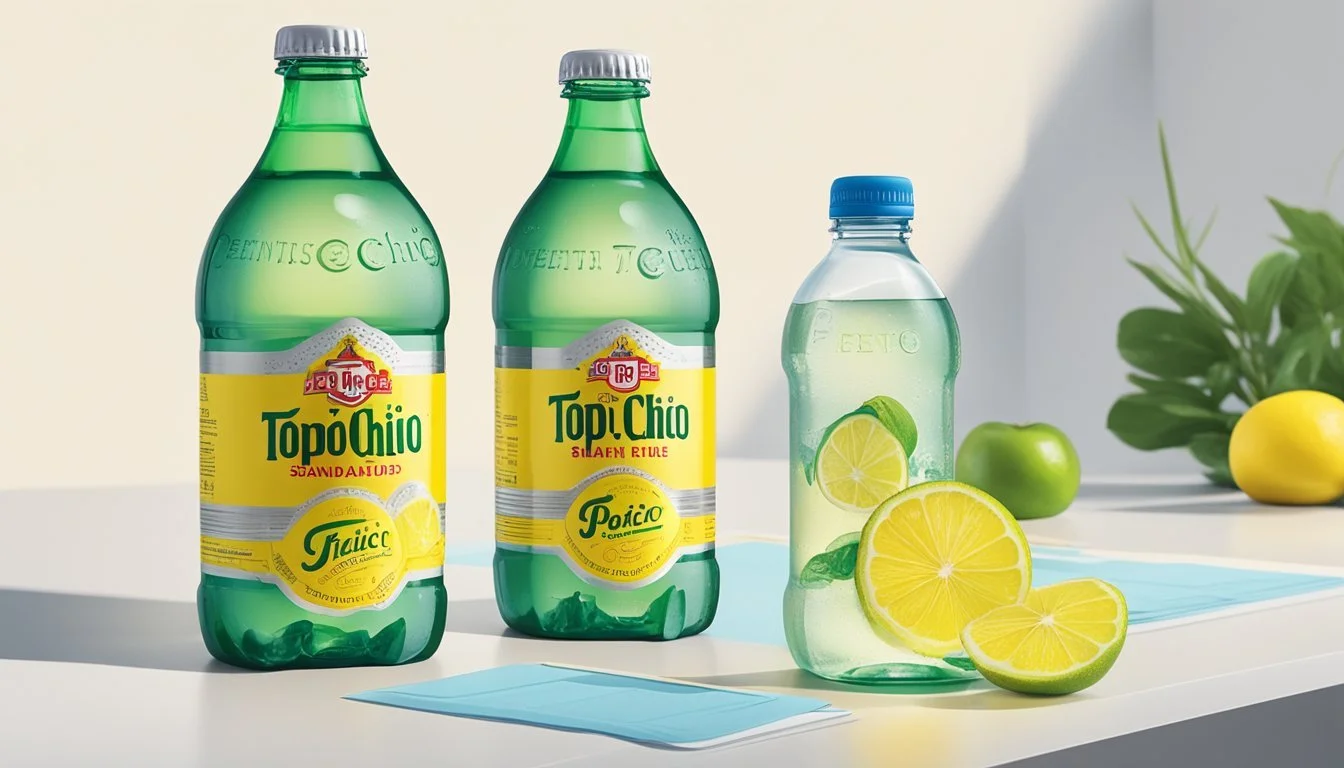Penta vs. Topo Chico
A Comparative Analysis of Bottled Water Quality
When it comes to staying hydrated with bottled water, consumers often grapple with the choice between purity and taste. Penta and Topo Chico represent two distinct approaches to bottled water, each appealing to different preferences and priorities. Penta water emphasizes ultra-purification processes claiming to yield high-quality water that's not only pure but also oxygen-infused, offering hydration benefits with an almost neutral taste profile.
Topo Chico, on the other hand, is a sparkling mineral water with roots in Monterrey, Mexico, which has been catering to those who prefer a bit of zest in their hydration since 1895. Its naturally carbonated properties and mineral composition give it a distinctive taste, often described as crisp and refreshing, which has garnered a dedicated following. As the bottled water market continues to flourish, the choice between Penta's purity and Topo Chico's effervescent charm is a topic of lively debate among health-conscious consumers and connoisseurs of carbonated beverages alike.
Historical Overview
This section provides a historical backdrop for two distinct brands of bottled water: Topo Chico and Penta. Each has a unique origin story that reflects their respective places in the beverage market.
Topo Chico's Origins
Topo Chico, a mineral water, has its roots deep in the history of Monterrey, Mexico. The brand derives its name from the Cerro del Topo Chico, a hill near which the water is sourced. With a history dating back to 1895, this water has been a part of the local heritage for over a century. Topo Chico has built its reputation on the natural effervescence and mineral composition of its water. The brand's growth was significant enough to catch the attention of major global players, leading to its acquisition by Coca-Cola in recent years.
Penta's Emergence
Penta, on the other hand, is a much younger brand in the bottled water sector. Founded in Texas, Penta prides itself on its purification process, which claims to deliver ultra-pure water. Unlike Topo Chico, Penta's focus is less on natural minerals and more on the technological aspects of purification. It has carved out its own space in the market by emphasizing the scientific advancement in water purification that distinguishes it from other brands. Penta's story may be less steeped in tradition than Topo Chico's, but the brand has quickly established a name for itself with a different appeal.
Product Analysis
When evaluating bottled water, Penta and Topo Chico offer distinct options. Their differences lie in the source, purification process, and mineral content.
Penta Water is ultra-purified, boasting a 13-step purification process that includes UV light, filtration, and reverse osmosis. The result is water free from impurities, with a focus on purity.
Purification: 13-step process
Minerals: Demineralized
Taste: Clean, lacking mineral taste
On the other hand, Topo Chico is a sparkling mineral water pulled from the Cerro del Topo Chico spring in Monterrey, Mexico. It has a high mineral content which contributes to its distinct taste and carbonation level.
Source: Cerro del Topo Chico spring
Minerals: Rich in minerals
Taste: Crisp, with light carbonation
Comparison Table
Feature Penta Water Topo Chico Purification 13-step process Natural spring Mineral Content Demineralized High in minerals Taste Pure, neutral Mineral-rich, effervescent Type Still Sparkling Packaging Plastic bottle Glass and plastic bottles
In terms of health and safety, both brands have met FDA regulations, but Topo Chico faced scrutiny for PFAS levels. Recent reports indicate that Topo Chico has made efforts to reduce these levels.
These profiles cater to different preferences: seeking either purity or natural mineralization. The choice between Penta and Topo Chico may come down to the consumer's taste preference and their appreciation for mineral content or the absence of it.
Environmental Impact
When assessing the environmental impact of bottled water brands like Penta and Topo Chico, two key areas emerge: sustainability practices and the materials used for bottling. Each brand's approach to these areas contributes significantly to its overall environmental footprint.
Sustainability Practices
Penta Water prides itself on utilizing non-GMO water purification processes, aiming to minimize its impact on the environment. The brand emphasizes a clean and sustainable treatment method without the use of additives or chemical treatments.
Topo Chico, on the other hand, has not made explicit claims regarding non-GMO processes. However, the company has taken steps to reduce certain contaminants in its water, reflecting a concern for product safety and quality that also indirectly benefits the environment.
Bottle Materials and Recyclability
Both Penta and Topo Chico offer products in different materials, which have varying environmental implications:
Penta does not typically use glass bottles, which are recyclable but have a higher energy footprint for production and transportation.
Topo Chico offers its sparkling mineral water in glass bottles, leveraging the material's infinite recyclability, though at the cost of higher energy in logistics.
Aluminum:
Neither Penta nor Topo Chico heavily promotes the use of aluminum in packaging, which, while being highly recyclable, also relies on energy-intensive production.
When considering recycling, both glass and aluminum can be efficiently recycled, reducing the demand for new raw materials and the negative impacts on the environment. However, actual recycling rates depend on consumer behavior and local recycling infrastructure, which is critical for the effective reduction of each product's environmental impact.
Brand Presence
The brand presence of Penta and Topo Chico in the bottled water market is characterized by their distinct market positions, sales and distribution networks, and marketing strategies. These factors significantly influence consumer choice and brand loyalty.
Market Position
Penta enjoys a reputation for ultra-purified drinking water, whereas Topo Chico is known for its mineral content and effervescence. Penta has positioned itself as a premium hydration choice due to its advanced purification process. Topo Chico, on the other hand, boasts a longstanding history and its identity as a traditional sparkling mineral water, especially within the Hispanic market. Consumer Reports often highlights the importance of brand history and composition in water preference.
Sales and Distribution
Penta's sales volume does not typically match the likes of Topo Chico, which benefits from the distribution expertise of its owner, Coca-Cola. Since its acquisition by Coca-Cola, Topo Chico has expanded its distribution, especially within the U.S. market, with its sales reaching figures around $220 million. Penta is widely available but doesn't have the same level of market penetration. However, both brands are easily accessible on major retail platforms like Amazon, catering to a global consumer base.
Marketing Strategies
Topo Chico utilizes its historical charm mixed with modern advertising tactics, often engaging consumers through social media and collaborations. As a heritage brand, it plays on its authenticity and distinctive taste. Penta, while less prominent in advertising, focuses on the health-conscious consumer, emphasizing the science behind its water purification. Both brands leverage their unique selling points to appeal to their target markets but use different methods to engage their audiences.
Consumer Experience
When comparing Penta and Topo Chico bottled waters, consumers often express distinct preferences based on taste, how the waters complement drinks, and the value they get from each brand.
Taste Testimonials
Consumer reports often highlight that Penta water is praised for its purity and clean taste due to its ultra-high filtration process. In contrast, Topo Chico is frequently celebrated for its unique mineral content and carbonation that delivers a crisp and refreshing taste experience. Topo Chico has been noted for its sharp effervescence, which can be particularly satisfying for those who enjoy sparkling waters with a strong fizz.
Home and Bar Usage
Topo Chico is a popular choice for both home consumption and as a mixer in bars, especially in Austin, where it's a cultural staple. Its strong carbonation makes it a preferred mixer in cocktails such as the "ranch water" – a simple drink consisting of tequila, lime juice, and Topo Chico. Penta, being a non-carbonated, purified water, is less common as a mixer for cocktails but is often used for hydration due to its lack of additives and its hydrating properties.
Affordability and Accessibility
Topo Chico:
Price range: often varies
Accessibility: widely available in stores and online; especially in Texas
Penta:
Price range: typically higher due to the specialized filtration process
Accessibility: more limited distribution compared to Topo Chico, but available through certain health-focused retailers and online
Consumers looking for economic options might prefer Topo Chico, especially for the use as a mixer in seltzers, hard seltzers, and club soda. Penta, while less accessible, might be sought after by those prioritizing water purity over cost.
Competitive Comparison
In the world of bottled waters, each brand offers unique characteristics that differentiate it from its competitors. This section provides a breakdown of how Topo Chico and Penta stand in comparison to other leading bottled waters in their respective categories of sparkling and still waters.
Topo Chico Vs Other Sparkling Waters
Topo Chico Agua Mineral is renowned for its effervescence and mineral composition, often compared with other premium sparkling water brands like Perrier, San Pellegrino, and LaCroix. Here's how they stack up:
Topo Chico: Sourced from Monterrey, Mexico, known for its distinct, sharp bubbles.
Perrier: Sourced from France, offers a variety of bubbly flavors; also high in minerals.
San Pellegrino: Italian origin, recognized by its subtle bubbles and balanced mineral content.
LaCroix: American brand, stands out for its wide range of flavors and absence of calories, sodium, and sweeteners.
LaCroix, in particular, differs as it's not marketed for its mineral content and offers a lighter carbonation compared to Topo Chico. Spindrift may also be a competitor, known for including real fruit juice in its carbonation, setting it apart in terms of taste and calories.
Penta Vs Other Still Waters
Penta water is ultra-purified and markets itself on a proprietary purification process that includes spinning the water under high speed and pressure (
bold filtration). In the market for still bottled waters, it competes with brands like Mountain Valley and Voss:
Penta: Promises high purity levels, boasting a patent for a 13-step purification process.
Mountain Valley: Sourced from natural springs in Arkansas, known for its natural mineral content and taste.
Voss: Originating from Norway, stylishly bottled, and also touts purity with an emphasis on its artisan source.
Each of these brands highlights purity, but Penta focuses on its technological process, while Mountain Valley and Voss capitalize on their natural sources. The mineral composition takes a backseat in Penta's branding, unlike Mountain Valley, which often emphasizes the mineral benefits of its spring water.
Regulatory and Health Standards
When considering the quality of bottled water, the Food and Drug Administration (FDA) plays a crucial role in determining health and safety standards. Contaminants such as PFAS and chlorine are specific points of interest in these regulations.
Safety Certifications
Both Penta and Topo Chico must comply with the FDA's set regulations for bottled water. This includes meeting standards for physical, chemical, microbial, and radiological contaminants. The FDA categorizes bottled water under the general food category, ensuring that manufacturers process, bottle, hold, and transport it under sanitary conditions.
Penta Water: Boasts a robust purification process, including treatment steps such as deionization and UV light exposure.
Topo Chico: Subject to Coca-Cola's internal safety measures and aligns with FDA standards for mineral water.
Contaminant Levels
The levels of PFAS (per- and polyfluoroalkyl substances), which are synthetic chemicals found in various consumer products, have become a focal point for consumer health.
PFAS in Topo Chico: Historically, tests have reported higher levels of PFAS in Topo Chico, although recent studies indicate Coca-Cola has reduced these levels by more than half.
Chlorine and Other Contaminants: While Penta Water claims to be free of chlorine and other common contaminants due to its filtration methods, independent research on the brand's specific PFAS levels is less readily available.
Tables for contamination levels are not provided due to specific numerical values not being referenced in the request.
Note: The commentary of health experts such as Peter Attia on the subject of PFAS in bottled water can provide valuable insights, but specific references to his views are not included in this section absent direct relevance to regulatory and health standards.
Conclusion
Choosing between Penta and Topo Chico comes down to individual preferences and priorities. Penta water is ultra-purified and boasts a lack of contaminants. It aims for purity and taste, undergoing a patented 13-step purification process. In contrast, Topo Chico, a naturally carbonated mineral water, is known for its unique mineral composition and effervescence. However, recent research has raised concerns about PFAS levels, prompting Topo Chico to reduce these contaminants significantly.
Penta Water
Ultra-purified
13-step purification process
Marketed for its purity and lack of contaminants
Topo Chico
Natural mineral water with carbonation
Distinct mineral composition
Effervescent texture
Made efforts to reduce PFAS levels
Consumers looking for sparkling mineral water might prefer Topo Chico for its characteristic fizz and mineral content. Those prioritizing the removal of all potential contaminants might lean towards Penta for its rigorous purification. The choice also depends on whether one is looking for still or sparkling water.
It is essential to consider current research and environmental factors. Consumers are encouraged to stay informed about any changes in bottled water safety standards and to weigh their content preferences carefully. The decision should align with one's health considerations, taste desire for sparkling or still water, and environmental impact awareness.

